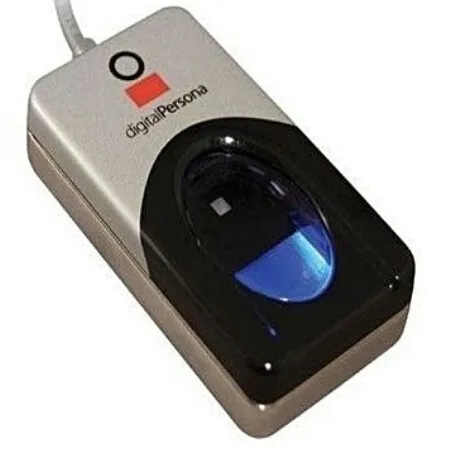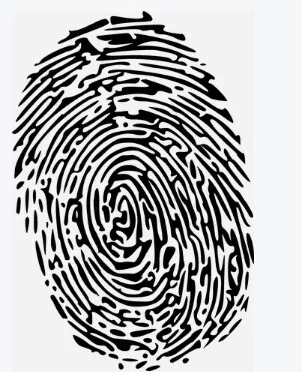Hello Steemians,
My name is JAMES, a Graduate of Electrical and Electronics Engineering from University of Ibadan. I’m Genuinely Happy and grateful to @rharphelle for introducing me to this Superb platform and I must say ever since I joined it’s been worthwhile for me because I keep learning new things consistently.
When I started writing this post that was when I realized that writing a steemit post is not as easy as it looks and I must specially commend the consistent writers. You guys are the BEST and I look forward to joining the league of consistent writers on steemit. So watch out for me
I’m genuinely crazy about technology and Overtime I'm sure we would get to know each other better. My very first post would be about fingerprint scanners.
Lets get Started
Fingerprints scanning is unarguably the most popular biometric technology and this does not come as a surprise due to the fact that it is a fast, easy and convenient method of authentication. Decades ago we mostly saw the use of fingerprint scanning technology in blockbuster movies but due to the advancement of technology Fingerprint scanning is gradually and steadily making headway into our everyday life as manufacturers devise new and affordable ways of incorporating this technology.
Latest smartphones, laptops and gadgets make use of fingerprint scanning as another security feature, thereby making their gadgets more secure and easier to use. Now there is really no need to struggle with inputting patterns or typing PIN codes before gaining access to your phones, all you have to do is place your finger in the fingerprint scanner fitted into the home button or at back of your phone and instantly gain full access to your gadget.
Personally I cannot remember the last time I actually used PIN or pattern to gain access to my phone because fingerprint allows fast and easy one finger access to unlock phones. This superb way of identifying users has made fingerprint scanning so popular and that's why it's widely used.
Compared with the passwords, patterns, pins codes or access cards, fingerprints are practically impossible to Guess or hack like a password or Pin code and the most amazing aspect of using fingerprint scanning is you can’t misplace or forget your fingerprints like you can Forget your pin, passwords and access cards. So it is accessible Everywhere you go.
Due to numerous benefits of fingerprint scanning, they can be used for various security purpose such as fingerprint padlocks and safes, biometric door locks that use fingerprint in addition to other forms of security and also in cars you would never have the problem of misplacing your keys. In fact Major banks have incorporated finger print as a fundamental tool for opening accounts, signing in process for their smartphone application as well as for their ATM machines for authentication.
In developed countries, the military make use of this technology to identify criminals and make personalized guns that would only work if the authorized soldier or cop makes use of the gun. Although this guns are not widely used due to certain laws but the first time I saw this technology used was in this blockbuster movie skyfall by james bond, I remember he used a walther pistol that makes use of a palm scanner that detects if james bond is the one holding the gun and only fires when he is holding it, thereby preventing the enemy or just anyone from using the gun.What an amazing way to use a biometric scanner.
Now let’s take a look at this password you cannot forget---your Fingerprints
For a second stop reading and just take a good look at your fingers right now?
Those curly pattern you see is an evidence of your uniqueness in this world of over 7billion people and is a superb way of telling people apart. These patterns are formed by random genetic and biological processes during development in the womb. You would realize that the finger is similar to a topographic map of a mountainous region having long ridges, diverging at several junctions and of course spreading in several directions with valleys between them.
On your finger Ridges line may form a fairly circular shape at the center known as a whorl or the ridges enter from one side and leaves your finger from the other side after a slight bend known as the Curve or the ridges line enters your finger from one side and takes an exit from the same side after making a U-turn known as the loop.
Bifurcations are the points where these ridges split while minutiae are specific shapes and features of the fingers such as the points where the lines in your finger terminates or split into two. The entire pattern is not required to get a match, fingerprint scanner scans the finger looking for minutiae and then makes use of highly complex algorithms to recognize and analyses these minutiae to check whether the loops, whorls and curves have any similarity.
The scanner stores the information of specific point on the finger in the form of binary numbers and doesn’t keep the complete image of your fingerprint.
FINGERPRINT SCANNER
The fingerprint scanner basically functions by scanning and capturing the pattern of the ridges and valleys on a finger, the pattern analysis or matching software processes the information and compares it with the list of registered fingerprints on file. Access would be granted to the individual if the identity is verified after getting a successful match.
However, the type of scanner used would determine the method of capturing the fingerprint data. The two main types of fingerprint scanners used commercially are OPTICAL scanners and CAPACITANCE scanners.
Although their methods differ but they both come up with the same sort of images.

OPTICAL SCANNER
Have you ever photocopied your hand just for fun?
If you have then the operation of an optical scanner wouldn’t be so difficult to understand. But if you haven’t I got you covered.

The major part of an optical scanner is the charged coupled Device (CCD) which is simply an array of light sensitive diodes known as photosites, this photosites respond to light falling over them by generating proportional electrical signals.Once a finger is placed on a glass plate, Light Emitting Diodes (LEDs) are used to shine a bright light onto the glass your finger is pressed on to illuminate the ridges of the finger. (The quality of image varies depending on how you are pressing the glass surface, and how clean your fingers or the scanning surface is)
The light reflected on the finger falls on the charged coupled Device (CCD) in the scanner. Each photosite records the amount of light reflected by the ridges and valley of the finger. The pixel of information recorded by each photosite is then converted into an electrical signal so it can be processed into a digital imprint of your finger by the computer. The CCD produces an inverted image
You can think of the image as a black and white image.
The ridges of the finger are depicted by the darker areas on the image due to more reflected light while The valley between the ridges are depicted by the lighter areas on the image due to the less reflected.
Before the scanner processor compares the fingerprint captured to the stored data, an algorithm tests the image to ensures the darkness and sharpness of the final image are not too low or too high and must meet the standard of the scanner if not the image is discarded and an audible beep or LED indicator alerts the operator to re scan the finger.
However, if the image has a good definition and passes the test the scanner signals that the image is ok either by beeping or using a different LED indicator. The image is stored as an acceptable scan in a flash memory and is transmitted to a host computer where the processor proceeds to either save or compare the fingerprints with the stored data of fingerprints on the file.
Optical scanning devices find use in Many PC connected fingerprint devices. One Major disadvantage of optical scanners is that its difficult to differentiate between an image of a fingerprint and an actual finger thereby making It easy to fool.

CAPACITIVE SCANNER
To understand how capacitive scanner works…Just think about the way touchscreen works.
Fingers can be electrified so this type of scanner makes use of electrical current to determine fingerprint patterns by inducing an electric charge on the fingers. The sensor is made up of semiconductor chips, each tiny cell within the chips include two conductor plates covered with an insulating layer.
The capacitors plate stores charges in them and are charged by the voltage applied by the sensor, while the finger acts as the third capacitor. So by moving the finger closer or farther away from the conducting plates varies the distance between the capacitor plates.
When a finger is placed on the capacitive surface, the top of the ridge of the fingerprint makes the first contact to the surface, followed by the valley. So varying levels of charge in the ridge and valleys are measured. The capacitance between the ridges and the conductor plate would be more than the capacitance between the valley and the plate. So The capacitive scanner builds up a photo of a fingerprint by measuring the varying distances between each part of the finger from the surface.
By reading every cell in the array the sensor therefore makes use of this data to accurately draw out a general pattern of the ridges and valleys, so it can come up with the image of the fingerprint similar to the one captured by the optical scanner. The newly generated fingerprint is then compared with the previously stored version to authenticate the user.
Capacitive scanners are relatively smaller than optical scanners thereby making them suitable for smartphones.
An actual finger is required so a capacitive scanner cannot be tricked by a visual impression of a fingerprint. Which is a huge advantage thereby making it harder to fool compared with an optical scanner. Although it can still be fooled by a mold of a person’s finger.
Have Ever been unable to access your device using your fingerprint scanner?
Fingerprint scanners are quite accurate but there are sometimes when the scanner would not authorize your fingerprints. This could be due to a glitch, or maybe your finger or the surface of the scanner is covered with too much dirt or sometimes due to injuries
Engineers have anticipated that this could happen from time to time, that’s why manufacturers ensure that when devices are first been setup there is always an alternative unlocking method such as passwords, pins or pattern so users can still unlock their gadgets. This alternative unlocking method are also put in place for cases where the user wants to give another person access to the device.

CONCLUSION
Fingerprint scanning is a popular form of electronic security system that is used to grant users access or sometimes approve transactions using fingerprints for biometric authentication. A digital image of thefingerprint is captured using a scanner and used as authentication key instead of password or PIN. Thereby allowing Only the authorized user to gain access to a device or to approve a transaction
Fingerprint scanners is an Easy and superb method of identification and there is no doubt it has become an integral part of most people’s everyday life. Unlike the ridiculously long and complex passwords used by some people fingerprints cannot be forgotten or guessed.
However, the systems have its own draw backs which primarily centers around privacy but as technology advances steadily manufacturer are continuously improving the quality of encryption and data security to ensure the data are not stolen or misused.


